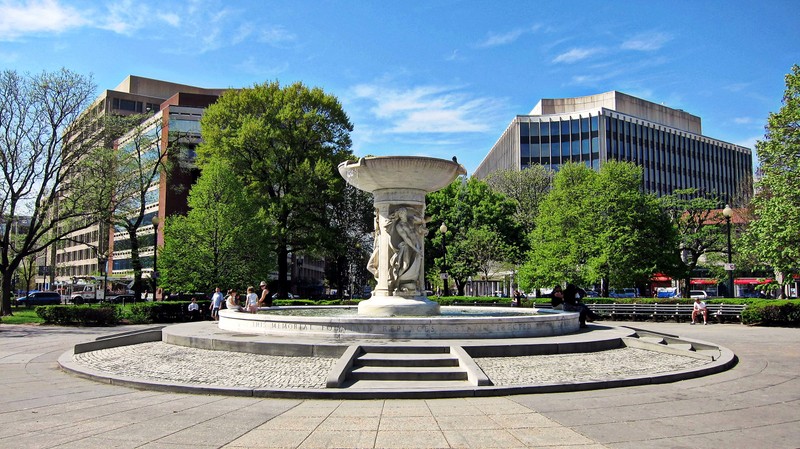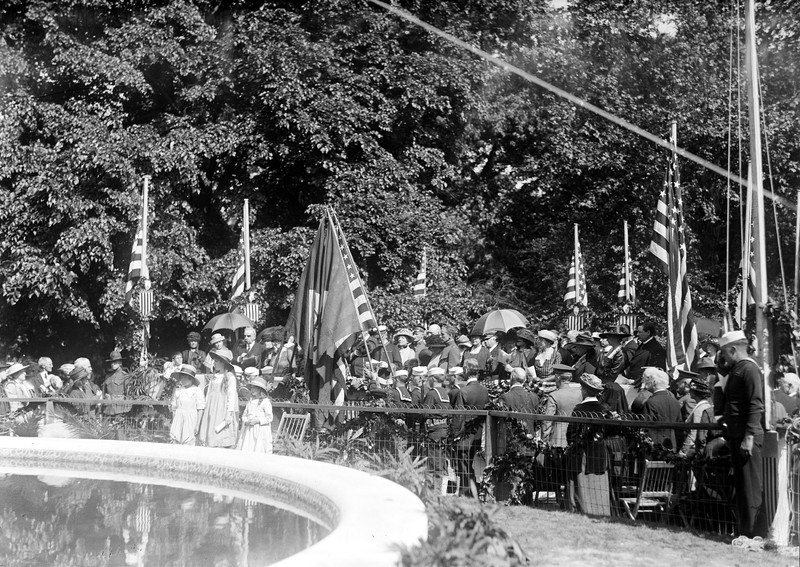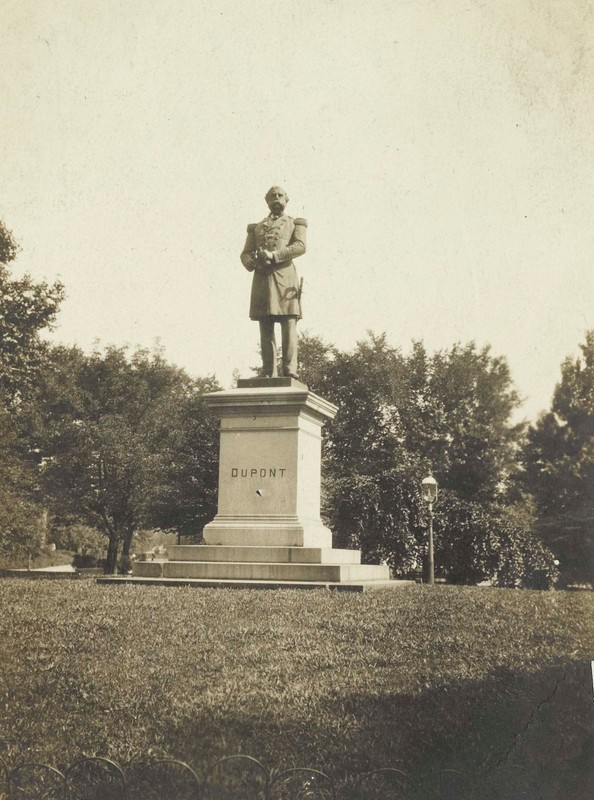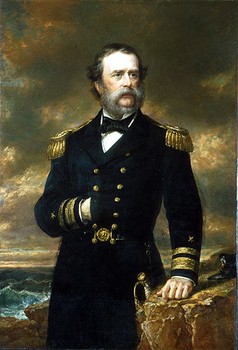Dupont Circle Fountain
Introduction
Text-to-speech Audio
Images
Dupont Circle Fountain in Washington, D.C.

A photograph of the fountain's installation in 1920

A photograph of the fountain's dedication ceremony in 1921

An undated photograph of the bronze statue of Du Pont in Washington, D.C.'s Dupont Circle

Samuel Francis Du Pont (1803-1865)

Backstory and Context
Text-to-speech Audio
Samuel Francis Du Pont was born on September 27, 1803 in Bergen Point (now Bayonne), New Jersey. The nephew of E.I. du Pont, founder of what would become the largest gunpowder factory in the country by mid-century, he attended Mount Airy Academy in Germantown, Pennsylvania before becoming a midshipman in the U.S. Navy at the age of twelve. In subsequent decades, Du Pont served on a number of different vessels that took him to the Caribbean, South America, and Europe. By the outbreak of the Mexican War, he had risen to the rank of commander. During the conflict, Du Pont commanded the sloop Cyane, helping to neutralize the Mexican naval threat in the Gulf of California, sinking or capturing thirty enemy vessels in the process. After the war, he helped modernize the U.S. Navy by exploring the potential of steam power, amending naval rules and regulations, and creating a curriculum based on engineering and mathematics at the United States Naval Academy. Du Pont also received a promotion to the rank of captain and briefly served as the academy’s superintendent. In 1860, he became commandant of the Philadelphia Naval Shipyard.
Following the outbreak of the Civil War, Du Pont helped devise Union naval strategy. He also received a promotion to the rank of flag officer and took command of the South Atlantic Blockading Squadron. In November 1861, Du Pont led a successful joint operation that captured Port Royal Sound in South Carolina, providing the Union with its first major naval victory of the conflict. As a reward for his accomplishment, he received a promotion to the rank of rear admiral the following year. In April 1863, Du Pont commanded a fleet of nine ironclads in an assault on Charleston, South Carolina. Without support from ground forces, the federal ironclads, with their limited number of guns and slow rate of fire, did not stand much of a chance. Confederate guns disabled five of Du Pont’s vessels, one of which later sank. A few months after the engagement, the worst naval defeat of the war, Du Pont agreed to be relieved of command. For the remainder of the conflict, he served on various boards and commissions. Du Pont died in Philadelphia on June 23, 1865 at the age of sixty-one. His remains were buried in the family cemetery just outside of Wilmington, Delaware.
In 1882, Congress commissioned a bronze statue of Du Pont and appropriated $20,500 for the project. Designed by sculptor Launt Thompson, it was dedicated at the center of the newly renamed Du Pont Circle (previously known as Pacific Circle) on December 20, 1884. Within a few decades, however, the pedestal began to settle unevenly, causing the statue to lean considerably to one side. In response, the Du Pont family, who were never fans of the statue, asked Congress to have it replaced. Congress agreed on one condition: that the Du Ponts foot the bill for the replacement. After acquiring authorization and accepting responsibility for funding, the family hired architect Henry Bacon and sculptor Daniel Chester French to design an ornamental fountain. At the time, the two were collaborating on the Lincoln Memorial. Dedicated on May 17, 1921, the white marble fountain consists of two concentric circular basins connected by a tall cylindrical pedestal adorned with high reliefs of three allegorical figures representing the sea, wind, and stars. The old bronze statue of Du Pont now resides in Rockford Park in Wilmington.
Sources
Barney, William L. The Oxford Encyclopedia of the Civil War. New York: Oxford University Press, 2001.
Jacob, Kathryn Allamong. Testament to Union: Civil War Monuments in Washington, D.C. Baltimore: The Johns Hopkins University Press, 1998.
"Rear Admiral Francis Dupont Memorial Fountain." historicsites.dcpreservation.org. DC Preservation League. Web. 6 May 2021 <https://historicsites.dcpreservation.org/items/show/165>.
Wright, John D. The Routledge Encyclopedia of Civil War Era Biographies. New York: Routledge, 2013.
https://en.wikipedia.org/wiki/Dupont_Circle_Fountain
https://en.wikipedia.org/wiki/Dupont_Circle_Fountain
https://en.wikipedia.org/wiki/Dupont_Circle_Fountain
https://digdc.dclibrary.org/islandora/object/dcplislandora%3A167235?solr_nav%5Bid%5D=5e62fd350120184eb98f&solr_nav%5Bpage%5D=0&solr_nav%5Boffset%5D=14
https://en.wikipedia.org/wiki/Samuel_Francis_Du_Pont
